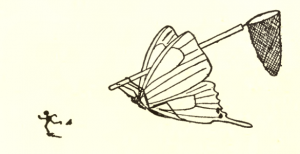
What Caught Our Attention: After an expression of concern (EOC) is published in a journal, the usual procedure is to either publish a subsequent correction or retraction — or, unfortunately, leave it sit ad infinitum. But apparently, there’s another option.
Recently, RSC Advances added an interim update to a 2016 expression of concern (EOC), letting their readers know that the editors remain interested, and still concerned.
The first EOC said the journal had received “credible information” that the findings in Figures 1 and 3, and the supplementary data, may not be reliable; the journal said it would publish an update “when a final outcome is reached.” This second EOC acknowledges that there were problems with the supplementary data, but the experiments have been replicated. However, the corresponding author “cannot verify the origin of Fig. 1b and 3c.” The editors note that the EOC remains linked to the article until proof is provided that “the reported results are sound.”
Journal: RSC Advances
Authors: Zhiyuan Hu, Jingjing Zhao, Zhaozheng Song, and Chunpeng Yanga
Affiliations: China University of Petroleum,China; Beijing University of Chemical Technology, China
The following article ‘Filled and peptide-modified single-walled carbon nanotubes: synthesis, characterization, and in vitro test for cancer cell targeting’ has been published in RSC Advances.
RSC Advances published an expression of concern in order to alert our readers to the fact that the Royal Society of Chemistry had been provided with credible information suggesting that the results presented in this paper, in particular Fig. 1 and 3 and the ESI, may not be reliable.
We are now able to provide the following update:
The characterisation data reported in Fig. S1 and S2 (ESI) were reproduced from a previous Chemical Communications paper which was co-authored by the corresponding author of this RSC Advances paper, Zhiyuan Hu.1 The corresponding author has confirmed that the characterisation data were not measured directly from the materials reported in this RSC Advances paper. The authors have repeated their synthesis and characterisation to provide the following replacement figures…
The corresponding author regrets that due to problems with file management he cannot verify the origin of Fig. 1b and 3c, therefore he cannot be certain that these images are representative of the materials reported.
The Expression of Concern will continue to be associated with this article until we receive independent verification from China University of Petroleum that the reported results are sound.
Andrew Shore
23rd June 2017
Executive Editor, RSC Advances
Date of Article: January 2015
Times Cited, according to Clarivate Analytics’ Web of Science: 2 (one is by the 1st EOC)
Date of 1st Notice: May 17, 2016
Date of 2nd Notice: July 11, 2017
Like Retraction Watch? Consider making a tax-deductible contribution to support our growth. You can also follow us on Twitter, like us on Facebook, add us to your RSS reader, sign up on our homepage for an email every time there’s a new post, or subscribe to our daily digest. Click here to review our Comments Policy. For a sneak peek at what we’re working on, click here. If you have comments or feedback, you can reach us at [email protected].